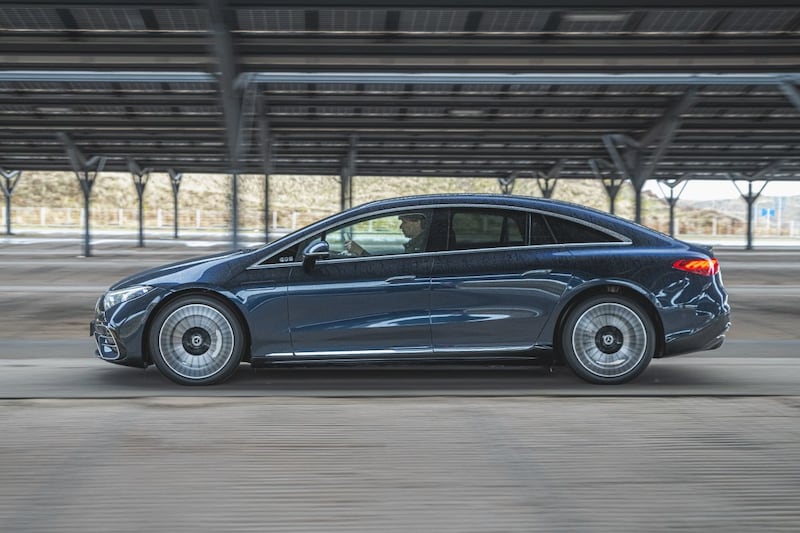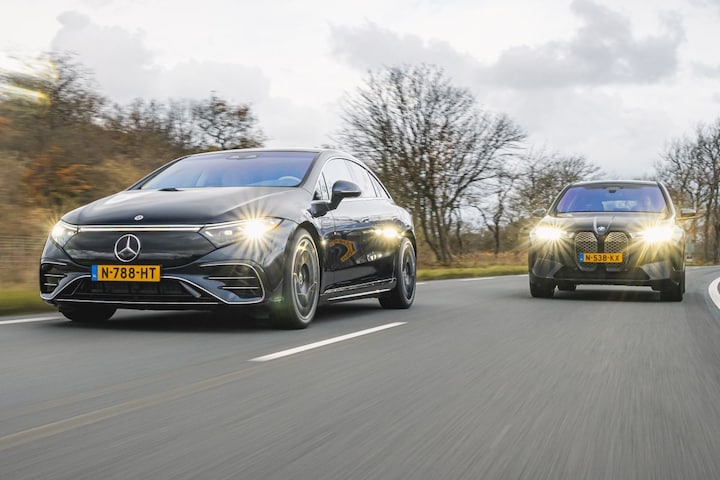‘We cannot achieve the theoretical driving range of 700 km’

With the EQS, Mercedes-Benz presented ‘the electric S-Class’. The car is visibly efficient, but that also makes it very different and that is not to everyone’s taste. In this section, taste is of secondary importance, it’s all about the hard figures. Does that smooth bodywork pay off in practice?
As with the regular S-Class, Mercedes offers a large number of variants. The range started with the EQS 350, a rear-wheel drive version with 292 hp that was dropped in 2022. It was the only EQS with a net 90.6 kWh battery, because every other EQS has a battery with no less than 108 kWh net (and 120 kWh gross) capacity.
Mercedes also offers a wide choice in terms of engine and drive. The entry-level EQS 450+ has 333 hp, 568 Nm and rear-wheel drive, while the 450 without plus produces 360 hp (and 800 Nm) on all four wheels. The EQS 500 produces 449 hp and the EQS 580 even 523, both with a fairly impressive torque of 855 Nm. Too tame? No problem. With 658 hp and no less than 950 Nm, the Mercedes-AMG EQS 53 is the answer to every power demand.
The EQS 450+ comes this far
You notice, with a car like this it is difficult to ignore banal matters. From this point on things change, because we look at the real power of the 108 kWh battery pack. The EQS 450+ is best represented in our Review section, and that is nice. This promises to be the most efficient EQS, with a WLTP range of no less than 757 kilometers.
Just to rip the band-aid off right away, our riders aren’t coming here. They do arrive at a still nice average of 588 kilometers with an associated power consumption of 18.3 kWh/100 km. The most economical driver shares the standings after about six months of driving. “We cannot achieve the theoretical driving range of 700 km,” he writes, “but we can achieve a good 600 km. Over 8,800 km our average consumption is 16.5 kWh/100 km. So you can always go back and forth within the Netherlands without charging.”
Another EQS 450+ rider scores only slightly worse after 16 months. “My consumption is currently 17.0 kWh/100 km on average. I think that is a very nice value.” And indeed, the associated range of 653 kilometers is very nice. He then explains how this score is achieved. “First of all, I never use winter tires. These are complete energy guzzlers and, in an average Dutch winter, just nonsense and a money grab,” is the clear opinion. “I also always adhere to the applicable speed limit. Finally, and not unimportantly, I always use pre-climatization on the pole before driving away.”

And this is what the more powerful versions do
We do not see the stronger EQSs in the user reviews, but we have put them through their paces ourselves. The EQS 500 competed against the BMW i7 and the EQS 580 was allowed to defend itself against another large BMW, the iX. In the first case, the Mercedes-Benz narrowly won the range battle, with 467 versus 444 kilometers. The iX, on the other hand, was devoured for breakfast, and later again for dinner. With a practical range of 465 to 298 kilometers, the smooth Mercedes undoubtedly proves to be the range king here.
– Thanks for information from Autoweek.nl